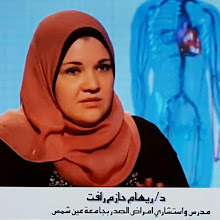Staging of NSCLC:
Primary tumor | |
TX | primary tumor cannot be evaluated, or tumor proven only by the presence of malignant cells in sputum or bronchial washings but not visualized by imaging or bronchoscopy |
T0 | no evidence of primary tumor |
Tis | carcinoma in situ |
T1 | tumor < 3 cm, surrounded by lung or visceral pleura, without bronchosopic evidence of invasion proximal to the lobar bronchus |
T2 | tumor > 3 cm, or tumor of any size with one or more of the following characteristics: - infiltration of the visceral pleura - invades the main bronchus but > 2 cm distal to the main carina - atelectasis or obstructive pneumonitis that extends to the hilus but does not involve the entire lung and without pleural effusion |
T3 | tumor of any size with invasion of the chest wall including adjacent rib(s), diaphragm, mediastinal pleura, parietal pericardium, or tumor in the main bronchus < 2 cm distal to the carina; or tumor associated with atelectasis or obstructive pneumonitis of the entire lung |
T4 | tumor of any size that invades the heart, great vessels, trachea, carina, esophagus, vertebral body; or tumor with malignant pleural effusion, or separate tumor nodules in the same lobe as the primary tumor |
Regional lymph nodes | |
NX | lymph node status cannot be evaluated |
N0 | no evidence of regional lymph node metastasis |
N1 | metastasis to ipsilateral peribronchial and/or ipsilateral hilar lymph nodes, including direct invasion |
N2 | metastasis to ipsilateral mediastinal and/or subcarinal lymph nodes |
N3 | metastasis to contralateral mediastinal, contralateral hilar, or ipsilateral and/or contralateral supraclavicular or scalene lymph nodes |
Distant metastasis | |
MX | distant metastasis cannot be evaluated |
M0 | no evidence of distant metastasis |
M1 | distant metastasis, including separate tumor nodules in a different lobe (ipsilateral or contralateral) |
Stage groupings based on TNM classification
occult carcinoma | TX | N0 | M0 |
stage 0 | Tis | N0 | M0 |
stage IA | T1 | N0 | M0 |
stage IB | T2 | N0 | M0 |
stage IIA | T1 | N1 | M0 |
stage IIB | T2 T3 | N1 N0 | M0 M0 |
stage IIIA | T1 T2 T3 | N2 N2 N1,N2 | M0 M0 M0 |
stage IIIB | any T T4 | N3 any N | M0 M0 |
stage IV | any T | any N | M1 |
Karnofsky scale:
Able to carry on normal activity and to work; no special care needed. | 100 | Normal no complaints; no evidence of disease. |
90 | Able to carry on normal activity; minor signs or symptoms of disease. | |
80 | Normal activity with effort; some signs or symptoms of disease. | |
Unable to work; able to live at home and care for most personal needs; varying amount of assistance needed. | 70 | Cares for self; unable to carry on normal activity or to do active work. |
60 | Requires occasional assistance, but is able to care for most of his personal needs. | |
50 | Requires considerable assistance and frequent medical care. | |
Unable to care for self; requires equivalent of institutional or hospital care; disease may be progressing rapidly. | 40 | Disabled; requires special care and assistance. |
30 | Severely disabled; hospital admission is indicated although death not imminent. | |
20 | Very sick; hospital admission necessary; active supportive treatment necessary. | |
10 | Moribund; fatal processes progressing rapidly. | |
0 | Dead |
*For Full Text --> Download: Bronchogenic Carcinoma.pdf

No comments:
Post a Comment